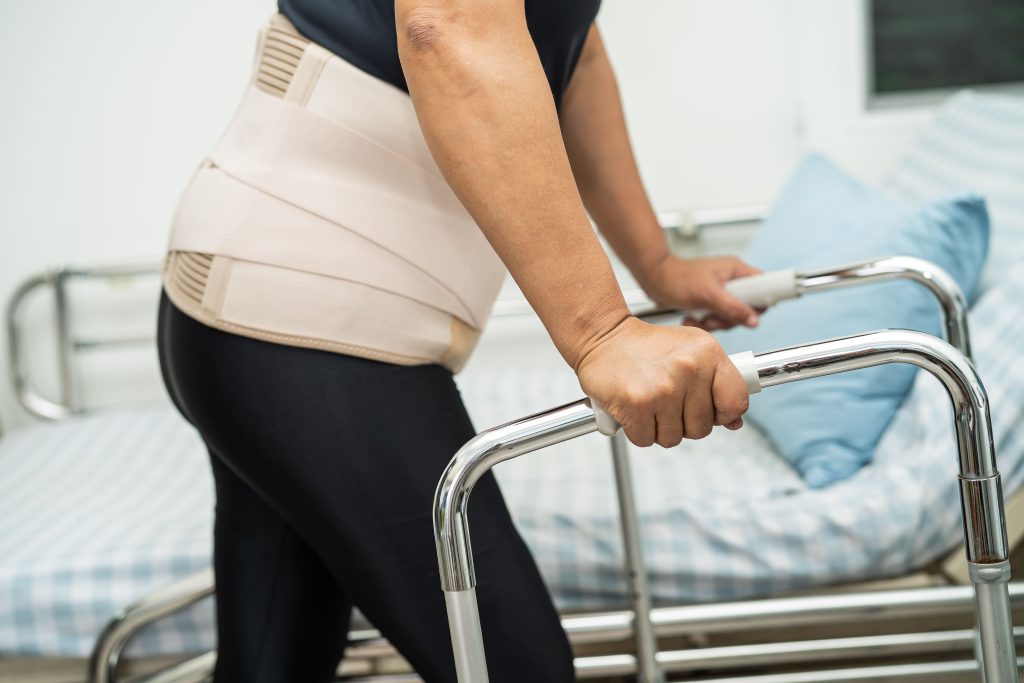Recovery Timeline After Hip Replacement Surgery: A Complete Guide
Hip replacement surgery, formally known as hip arthroplasty, is a medical procedure undertaken to relieve pain and restore function in people suffering from severe hip damage, often due to arthritis or injury. This surgery involves replacing the damaged hip joint with an artificial implant, which can be made from metal, ceramic, or plastic components.
Understanding the recovery timeline is important for patients undergoing hip replacement surgery, as it prepares them for the journey ahead. It sets realistic expectations, helps in planning for the necessary support and adjustments in daily life, and underscores the importance of following medical advice for a successful recovery.
Immediate Post-Surgery Period (0-24 Hours)
The first 24 hours after hip replacement surgery are critical for ensuring a smooth recovery process. During this initial phase, patients are closely monitored by the medical team to manage pain, prevent complications, and facilitate early mobility under supervision.
- Pain Management: Immediately following surgery, it is common for patients to experience pain around the surgical site. The orthopaedic surgeon will administer pain-relief medications intravenously or through oral routes to manage this discomfort. The approach to pain management is tailored to each person’s needs and may include a combination of opioids, non-steroidal anti-inflammatory drugs (NSAIDs), and local anaesthesia.
- Preventing Complications: To reduce the risk of complications such as blood clots and pulmonary embolism, patients are encouraged to perform light leg exercises and, if deemed safe, start walking with assistance. The use of compression garments or devices to promote blood circulation in the legs may also be recommended.
- Early Mobilisation: Under the guidance of a physiotherapist, patients may be encouraged to stand and take a few steps with the help of a walker or crutches on the first day after surgery. Early mobilisation is a key component of the recovery process, aimed at strengthening the muscles around the new joint and promoting blood flow to aid healing.
- Monitoring and Assessment: Vital signs, including blood pressure, heart rate, and oxygen levels, are continuously monitored to detect any signs of distress or complications. The surgical site is also regularly checked for signs of infection or excessive bleeding.
Early Recovery Phase (1-6 Weeks)
The early recovery phase following hip replacement surgery is a period marked by significant healing and a gradual increase in mobility. During this time, patients will notice improvements in pain management, mobility, and overall daily activities.
- Continued Pain Management: As the initial post-surgery pain subsides, the focus shifts towards managing discomfort with less potent pain relievers. Patients might transition from opioids to over-the-counter pain medications like acetaminophen or ibuprofen under medical advice.
- Physical Therapy and Rehabilitation: Therapists will introduce exercises designed to strengthen the muscles around the hip joint, improve flexibility, and enhance range of motion. The intensity and type of exercise gradually increase as the patient’s condition improves.
- Mobility and Weight-Bearing: Initially, patients may need to use mobility aids such as walkers or crutches to move around. Gradually, as strength and confidence grow, they are encouraged to increase their weight-bearing on the operated hip, following their orthopaedic surgeon’s or physiotherapist’s guidance. This progression is carefully monitored to ensure the new hip joint is not overstressed.
- Wound Care and Monitoring: Proper care of the surgical wound is essential to prevent infection. Patients are educated on how to care for their wounds at home, including cleaning and dressing changes if required. Regular follow-up appointments with the surgeon allow for monitoring of the wound’s healing process.
- Lifestyle Adjustments: During the early recovery phase, patients are advised on lifestyle adjustments to aid in their rehabilitation. These may include modifications to their home environment to reduce fall risks, dietary changes to support healing, and strategies for resuming daily activities safely.
- Gradual Resumption of Daily Activities: Patients are encouraged to gradually resume light daily activities, including walking, personal care, and simple household tasks. It is important to balance activity with rest periods to prevent overexertion and support the healing process.
Intermediate Recovery Phase (6-12 Weeks)
The intermediate recovery phase of hip replacement surgery, spanning from the sixth to the twelfth week, is characterised by continued healing and significant strides in regaining independence and mobility. During this period, patients often experience notable improvements in strength, range of motion, and the ability to perform daily activities with minimal assistance.
- Enhanced Physical Therapy Focus: Physical therapy sessions become more advanced, focusing on building strength, balance, and endurance. Exercises may include cycling on a stationary bike, swimming, and other low-impact activities that promote joint health without placing undue stress on the hip.
- Increased Mobility and Independence: Patients typically see a marked improvement in their ability to move around without the need for walking aids. The emphasis is on walking unaided, climbing stairs more confidently, and engaging in more substantial household or work-related activities as safely as possible.
- Pain Management Transition: The reliance on pain medication continues to decrease during this phase. Many patients find they no longer need prescription pain relievers and can manage any residual discomfort with over-the-counter medications, under the guidance of their orthopaedic surgeon.
- Lifestyle and Activity Adjustments: With improved mobility, patients can start to reintegrate into more rigorous daily activities and hobbies. However, it is important to avoid high-impact activities that could jeopardise the longevity of the hip implant. Patients are advised on safe exercise routines and lifestyle habits that support their long-term health and mobility.
- Monitoring for Complications: Although the risk of immediate post-surgical complications decreases, it remains important to monitor for any signs of infection, excessive swelling, or unusual pain around the hip joint. Regular check-ups with the orthopaedic surgeon ensure that the recovery is on track and any concerns are addressed promptly.
- Emphasis on Long-term Hip Health: Education on protecting the new hip joint and preventing future issues becomes a focus. This includes maintaining a healthy weight, avoiding activities that could cause injury, and possibly making modifications in activities to protect the joint’s longevity.
This phase is a critical period of transition towards more normal activities and routines, while still taking care to protect the new hip. Patients often report a significant improvement in quality of life during this stage, as they regain much of their pre-surgery independence and functionality.
Long-term Recovery and Rehabilitation (3-6 Months)
During the long-term recovery and rehabilitation phase, patients typically reach significant milestones in their recovery journey. This period is characterised by the consolidation of gains made in strength, mobility, and daily functioning, allowing most patients to return to their pre-surgery lifestyle, albeit with some adjustments.
- Full Return to Daily Activities: Most patients are able to return to their regular daily activities, including work, social engagements, and leisure activities. The focus shifts to maintaining these achievements and preventing any setbacks.
- Advanced Physical Therapy and Exercise: Physical therapy may still be ongoing, but the exercises are more advanced and focused on further enhancing strength, flexibility, and endurance. Patients may engage in regular fitness routines, incorporating activities such as swimming, cycling, and other low-impact exercises that do not jeopardise the integrity of the hip implant.
- Monitoring Joint Health: Regular follow-ups with the orthopaedic surgeon continue, albeit less frequently. These appointments are important for assessing the long-term success of the surgery and the health of the hip implant. Any concerns regarding pain, mobility, or function can be addressed during these visits.
- Lifestyle Modifications for Joint Preservation: Patients are encouraged to continue with lifestyle modifications that support joint health, including maintaining a healthy weight, avoiding high-impact activities, and adopting joint-friendly exercises. These modifications help in prolonging the life of the hip implant and ensuring ongoing mobility and quality of life.
- Continuous Improvement and Adaptation: While the most significant recovery milestones are typically achieved by the end of this phase, improvement and adaptation can continue for up to a year post-surgery. Patients are encouraged to remain active, adhere to their orthopaedic surgeon’s recommendations, and attend all scheduled follow-up appointments.
Complications to Watch For
While hip replacement surgery is generally safe and effective, like any major surgical procedure, it carries the risk of complications. Being aware of potential issues can help in their early detection and management, contributing to a successful recovery.
- Infection: Infection at the site of the surgery is a serious complication that can occur. Signs include fever, increased redness, warmth, or drainage from the wound. Prompt treatment with antibiotics or, in severe cases, additional surgery is essential.
- Blood Clots: The formation of blood clots in the legs (deep vein thrombosis) or lungs (pulmonary embolism) is a risk after hip replacement. Symptoms such as sudden swelling, pain in the leg, or difficulty breathing should be reported immediately. Preventative measures include blood-thinning medications and physical activity to improve circulation.
- Implant Problems: Though modern implants are designed to last many years, issues such as loosening or wear can occur, leading to pain or decreased joint function. Regular follow-ups can help detect these problems early.
- Dislocation: The new hip joint may dislocate if the ball of the implant comes out of the socket. Certain movements or positions may increase this risk. Treatment involves repositioning the joint, sometimes requiring surgery.
- Nerve Damage: During surgery, nearby nerves can be injured, potentially causing numbness, weakness, or pain. While this is often temporary, recovery can take several months.
- Leg Length Inequality: After surgery, some patients may feel that one leg is longer or shorter than the other, which can affect walking. Adjustments during surgery aim to prevent this, but minor differences can occur and may require physical therapy or shoe inserts for compensation.
- Fracture: Rarely, the bones around the hip implant may fracture during or after surgery, possibly requiring further surgical intervention.
Recognising the signs of these complications and seeking immediate medical attention can mitigate their impact on recovery. Adhering to post-operative guidelines, such as avoiding certain movements and participating in prescribed physical therapy, plays an important role in reducing the risk of complications.
Conclusion
Hip replacement surgery represents a significant advancement in the treatment of severe hip pain and mobility issues, offering many patients the chance to regain a more active and less painful lifestyle. Understanding the recovery timeline and being aware of the potential complications are important steps in preparing for the surgery and the recovery period that follows.
Patients are encouraged to actively participate in their recovery by adhering to their rehabilitation program, maintaining open communication with their orthopaedic surgeon, and making necessary lifestyle adjustments to support their healing and long-term joint health.




